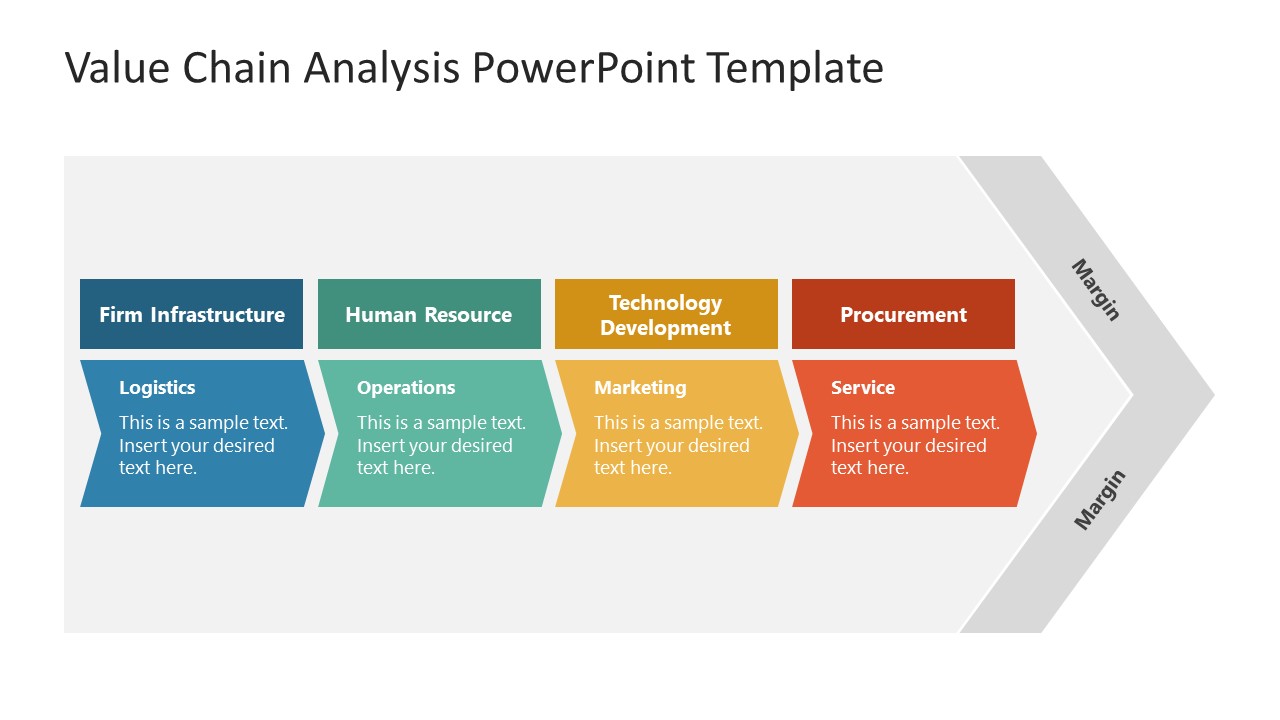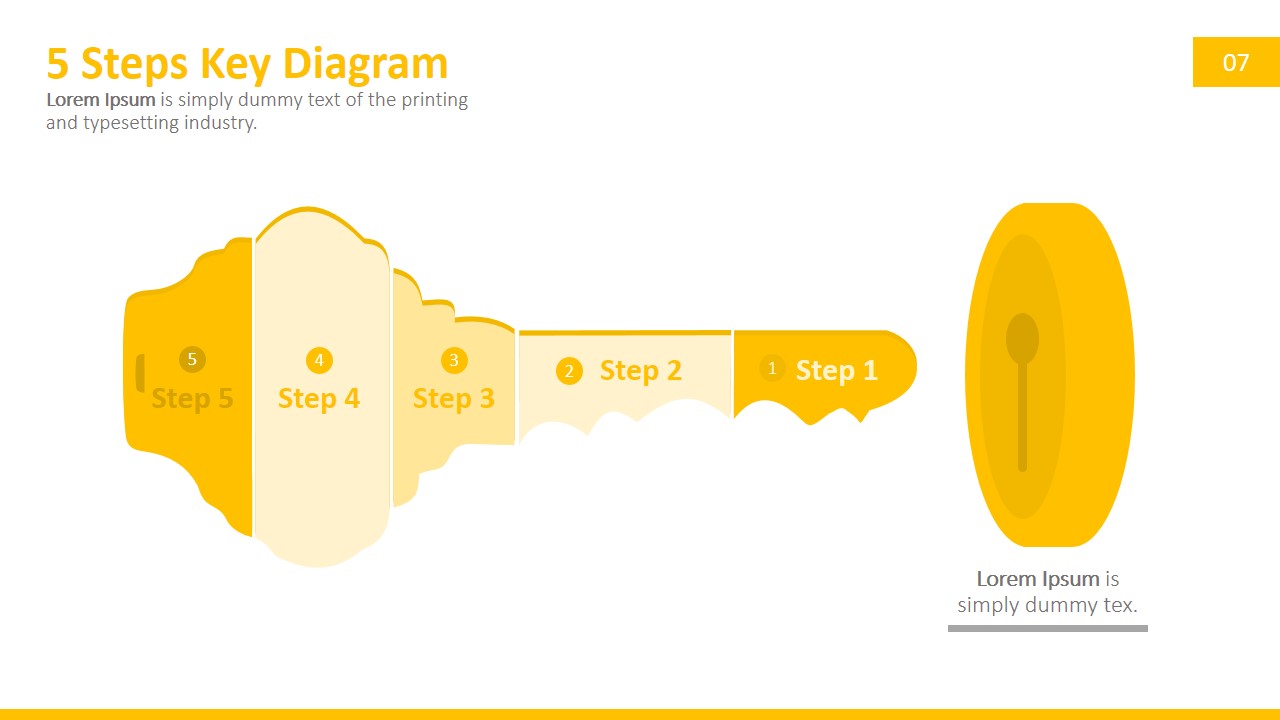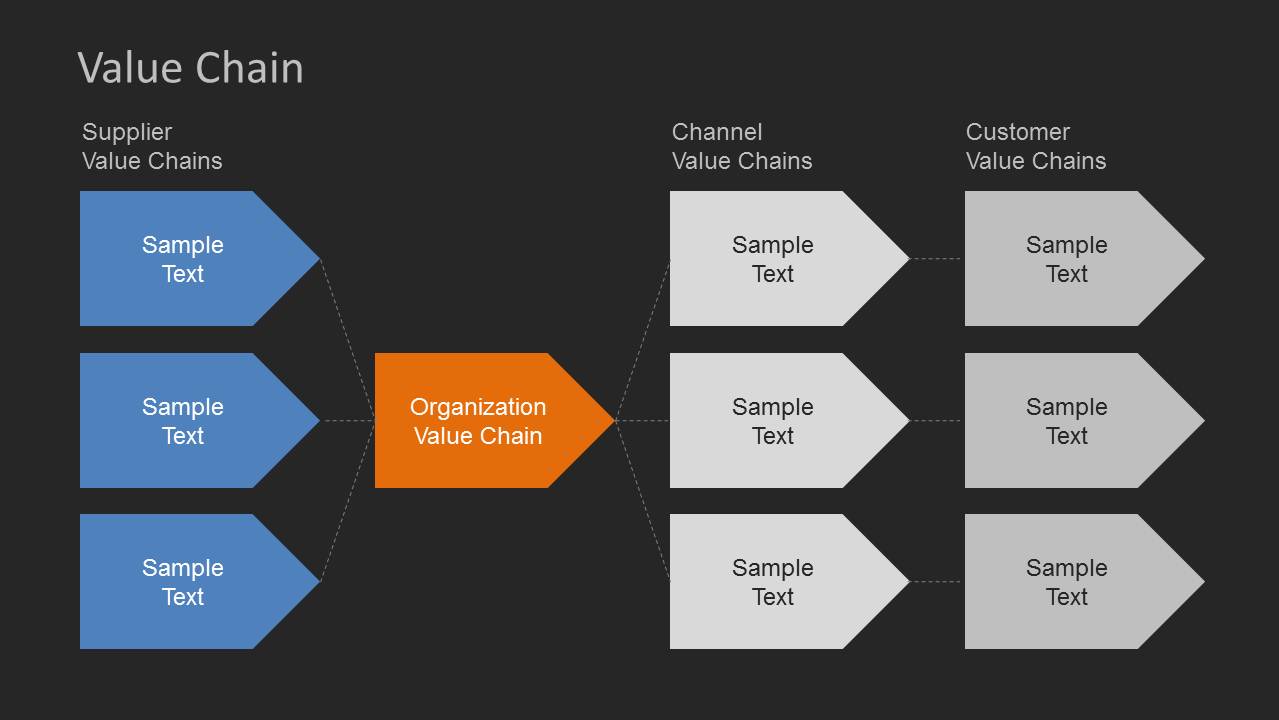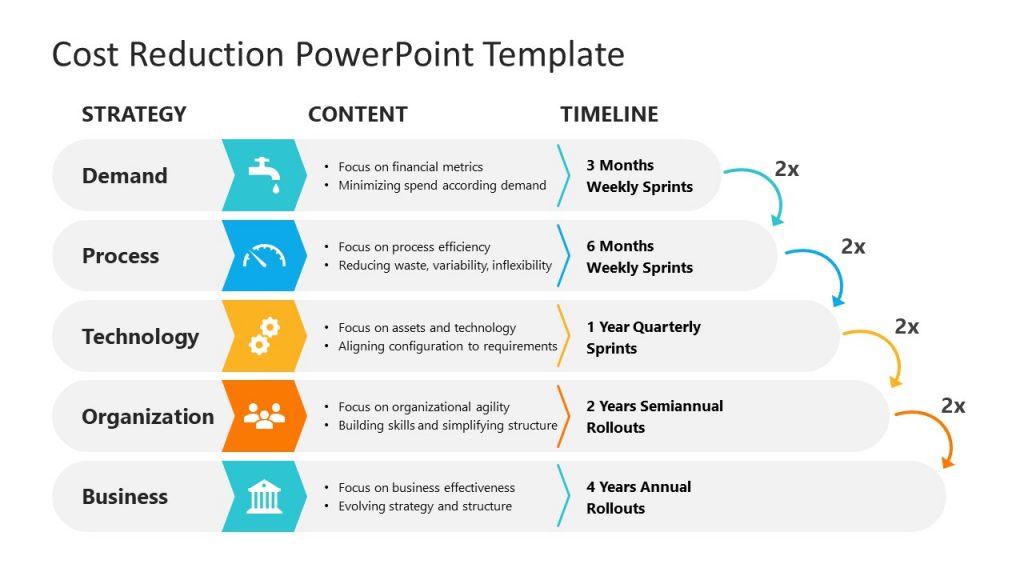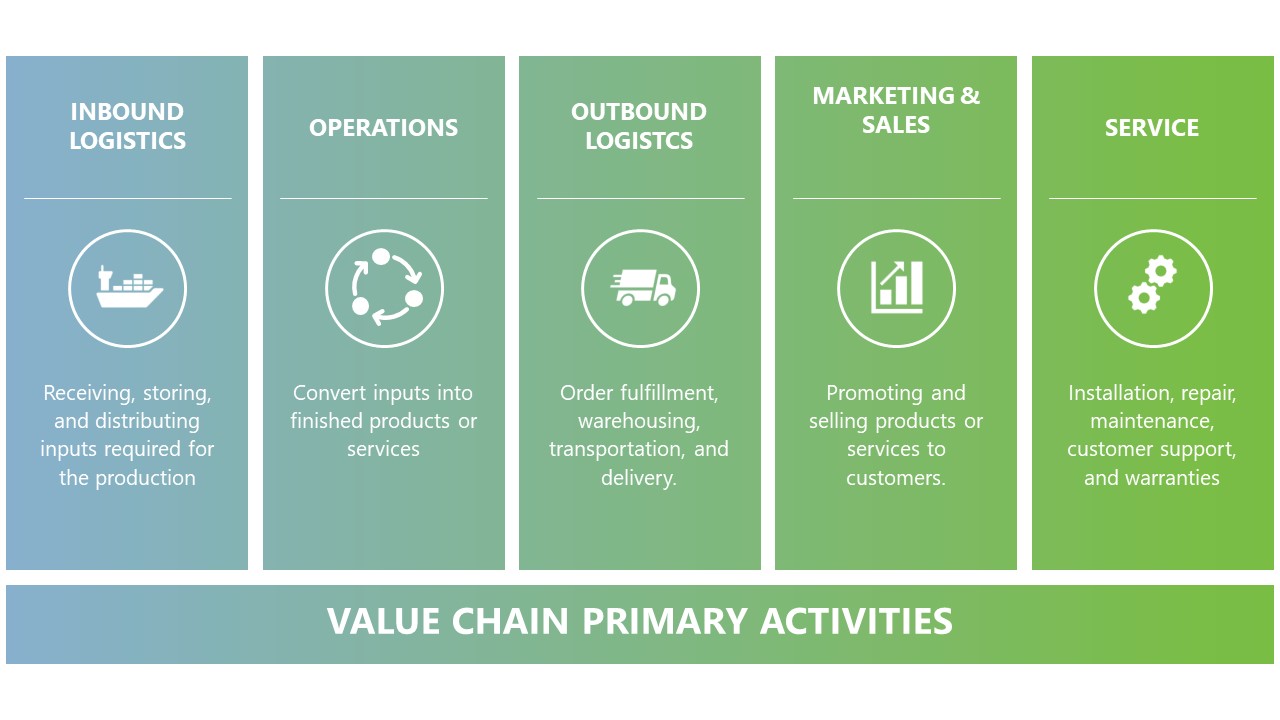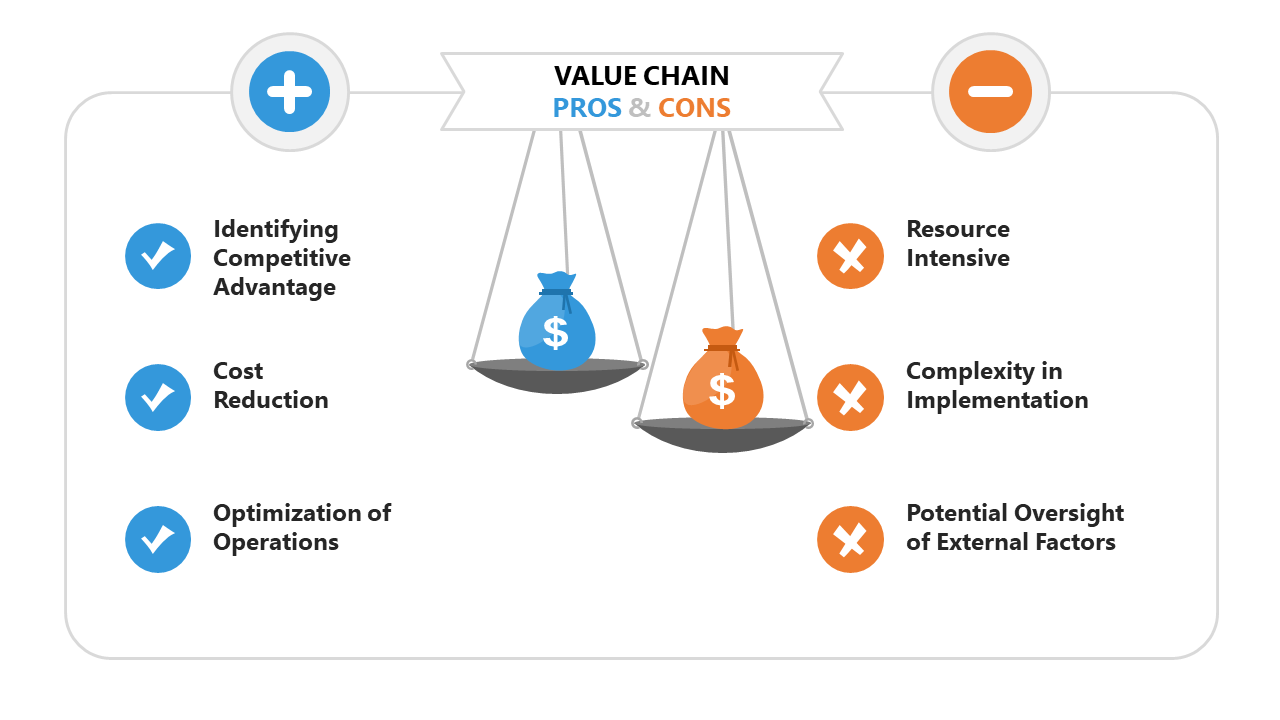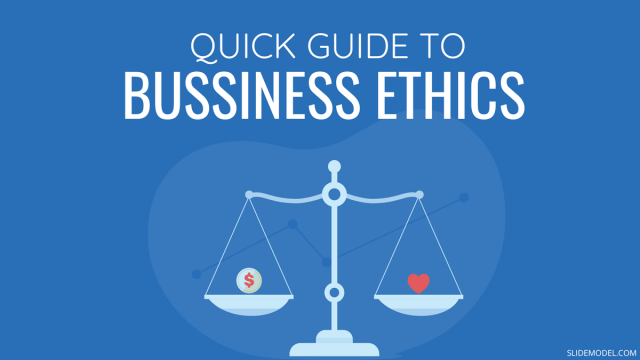
Successful businesses add value every time they sell something. Adding value means customers get what they want and are happy with their purchase, and the business owners earn revenue. Companies that give their customers more value make more profit than those that do not.
Therefore, understanding a business’s value chain is important for finding out how much value is added. This article highlights what a value chain is and why it matters. It will further guide you with a case study on how you can analyze yours to help your business keep more of the value it creates from sales.
Table of Contents
- What is a Value Chain?
- Elements of the Value Chain
- Advantages of Value Chain Analysis in Business
- What is the Difference Between Supply Chain and Value Chain?
- How to Create a Value Chain Analysis
- Recommended PPT Templates for Value Chain Analysis Presentations
- Final Words
- References
What is a Value Chain?
Value chain refers to all the business processes that make a product or provide a service. This chain includes everything from coming up with ideas to selling the final product. Michael Porter introduced it to help the company break down its tasks into activities and focus on where it can be better than its competition [1]. These activities either make the product worth more to customers or cost less to produce.
Porter’s value chain is not just about what a company does. It is also about the other companies it works with, like suppliers and distributors. You can imagine it as a series of steps. Each step adds something meaningful to the final product or service.
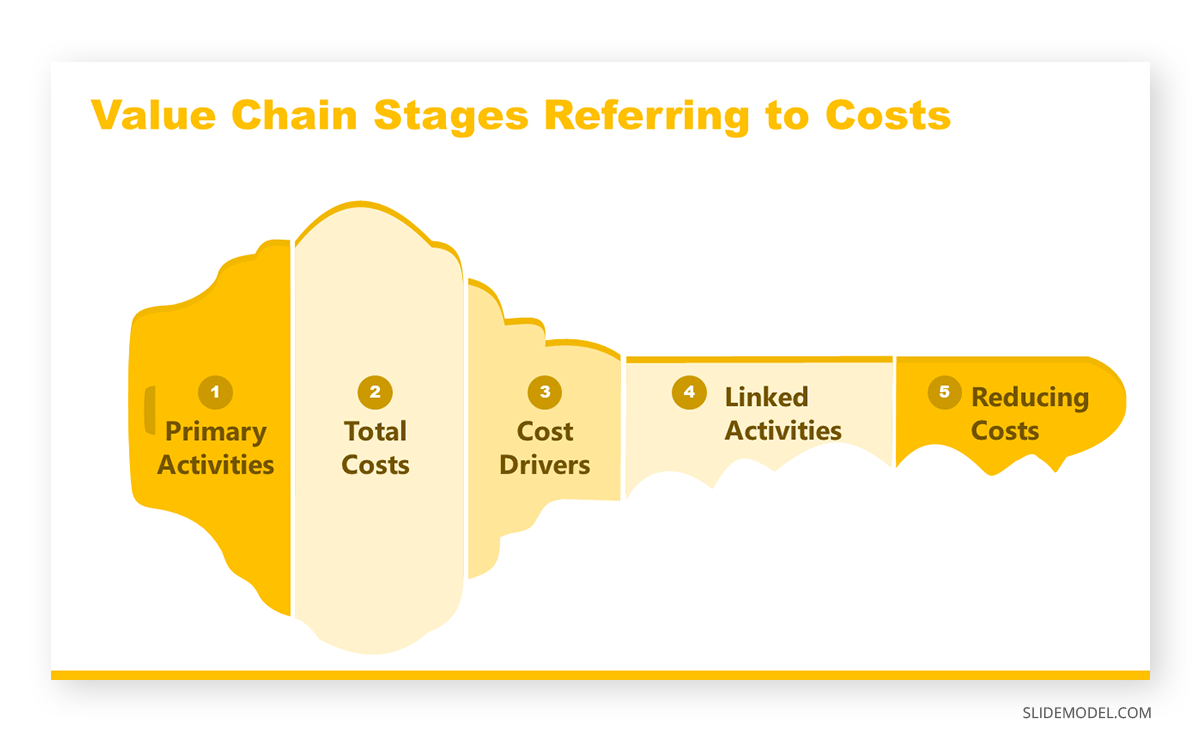
Analyzing the value chain is like focusing closely on each stage to identify opportunities for improvement. By looking closely at each part of the process, businesses can find ways to make things more efficient [2]. This saves money and helps become more competitive in the market.
Elements of the Value Chain
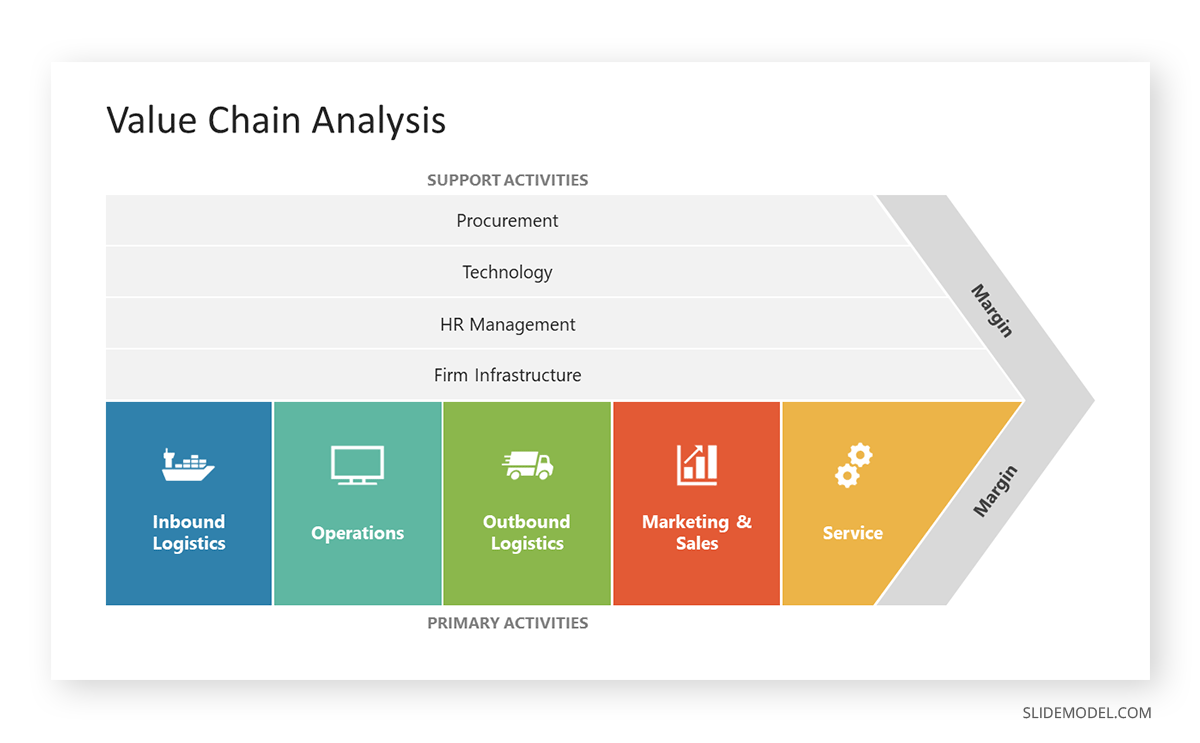
Activities of the value chain are divided into two categories.
Primary Activities
Inbound Logistics
It involves all the activities related to logistics. We are all aware that logistics in a business is all about receiving, storing, and distributing inputs required for the production process [4]. We will perform tasks such as sourcing raw materials, handling inventory, and managing suppliers.
Operations
These activities directly convert inputs into finished products or services. This stage includes the manufacturing, assembly, packaging, and testing processes.
Outbound Logistics
Once the products or services are ready, outbound logistics focuses on efficiently getting them to the customers. This includes order fulfillment, warehousing, transportation, and delivery.
Marketing and Sales
This section covers all activities related to promoting and selling products or services to customers. It includes market research, advertising, sales strategies, pricing, and distribution channels.
Service
After-sales service is crucial for maintaining customer satisfaction and loyalty. This includes installation, repair, maintenance, customer support, and warranties.
Secondary Activities
Procurement
It is sourcing and purchasing raw materials, equipment, and other resources required for production. Effective procurement practices can help to improve the quality, cost-effectiveness, and reliability of the inputs.
Technology Development
Innovation and technological advancements also improve efficiency and competitiveness. This includes research and development (R&D), technology acquisition, and innovation processes.
Human Resource Management
People are the driving force behind every business. Human resource management encompasses recruitment, training, performance management, and employee relations to ensure a skilled and motivated workforce.
Infrastructure
Infrastructure refers to the organizational support systems and facilities required to support the value-adding activities. This includes IT systems, communication networks, facilities management, and other administrative functions.
Advantages of Value Chain Analysis in Business
Value Chain Analysis helps businesses make intelligent decisions and improve their actions [5]. For example, companies can use it to find where they’re wasting time or money and fix those areas. It also allows businesses to understand their unique value from competitors in the same industry. Plus, it’s beneficial for ensuring everything runs smoothly in their supply chain, so they always have what they need and when needed.
What is the Difference Between Supply Chain and Value Chain?
The supply chain and the value chain are related but have different jobs. The value chain mainly focuses on the activities within a single company. It adds value at each stage of a product’s journey, from creation to customer satisfaction. This includes production, marketing, and customer support [3]. On the other hand, the supply chain has a broader scope. It involves acquiring materials from suppliers, manufacturing goods, and delivering them to customers. It coordinates with various partners to ensure smooth operations and minimize costs [3]. At the same time, the value chain focuses on value creation. Thus, the supply chain is more about efficiently moving goods and minimizing production and transportation costs.
How to Create a Value Chain Analysis
NB: This case study simplifies the Value Chain Analysis process for easier concept understanding. Due to the depth required for this kind of study, value chain analysis is performed at large-scale organizations as a tool.
Step 1: Identify Value Chain Activities
First, you separate the business operations into primary and support activities. Primary activities directly relate to creating and delivering a product or service. Conversely, support activities assist and enhance the efficiency and effectiveness of primary activities.
Café Delight maps out all its activities, from sourcing ingredients to delivering the final cup of coffee. Its focus on high-quality ingredients and exceptional customer service are critical to its brand identity.
Primary Activities for Café Delight include
Inbound Logistics: Procuring coffee beans, milk, and bakery items.
Operations: Brewing coffee and preparing food.
Outbound Logistics: Serving customers in-store or delivering orders.
Marketing & Sales: Promotional campaigns and loyalty programs.
Service: Customer service and after-sales feedback handling.
Support Activities might involve
Procurement: Sourcing high-quality ingredients.
Technology Development: Implementing order management systems.
Human Resource Management: Training baristas and staff.
Infrastructure: Managing cafes and administrative tasks.
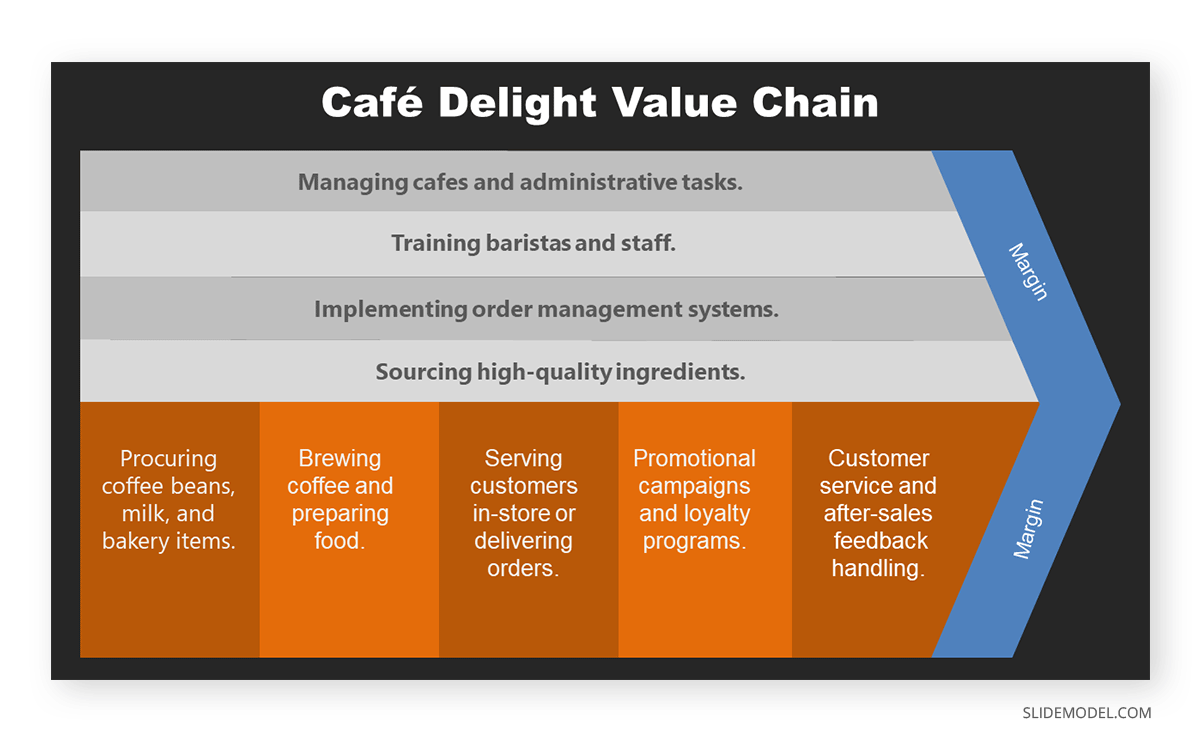
Step 2: Determine Activities’ Values and Costs
Here, you evaluate each identified activity to understand its cost structure and the value it adds to the final product or service. This involves assessing how each activity contributes to customer satisfaction and competitive advantage and pinpointing where costs are incurred.
In this crucial step, the focus shifts to analyzing the utility or value of each activity within Café Delight’s operations. It is identifying areas where costs can be reduced to enhance profitability. Let’s break down this step further.
Value Analysis
- Café Delight’s team conducts a thorough examination of its operations. It focuses on functions that directly impact customer satisfaction and operational efficiency. For instance, they identify that the primary function of serving quality coffee promptly to customers significantly enhances satisfaction.
- Café Delight offers a variety of specialty coffee blends sourced from exotic locations, priced at $4.50 per cup. Customers highly value the unique flavors and quality of the coffee.
- Secondary functions, such as the ambiance and customer service, are also evaluated for their contribution to customer experience and loyalty.
- Additionally, the café provides a cozy and inviting ambiance, with comfortable seating areas and aesthetically pleasing décor. This ambiance enhances the overall customer experience and encourages repeat visits.
Cost Analysis
- The team also examines the costs associated with each function, including procurement, labor, and operational expenses. For example, they find that high-quality coffee beans and skilled baristas contribute to higher procurement and labor costs.
- Additionally, they identify areas where costs could be reduced without compromising quality, such as optimizing inventory management or streamlining operational processes.
- Procuring high-quality coffee beans from international suppliers incurs significant costs for Café Delight, averaging $25 per pound. However, the café justifies this expense by offering premium coffee blends with higher prices and customer loyalty.
- Skilled baristas are essential to maintaining the café’s reputation for exceptional coffee. With an average hourly wage of $18 per barista and a team of 10 working 40-hour weeks, labor costs constitute a substantial portion of the expenses of Café Delight.
By conducting a thorough value and cost analysis, Café Delight also identifies areas for cost optimization without compromising its commitment to quality and customer satisfaction. For instance:
- The café explores alternative suppliers or bulk purchasing options to negotiate better prices for high-quality ingredients, such as coffee beans and bakery items.
- It implements efficient labor scheduling practices and training programs to maximize productivity and minimize labor costs while maintaining service excellence.
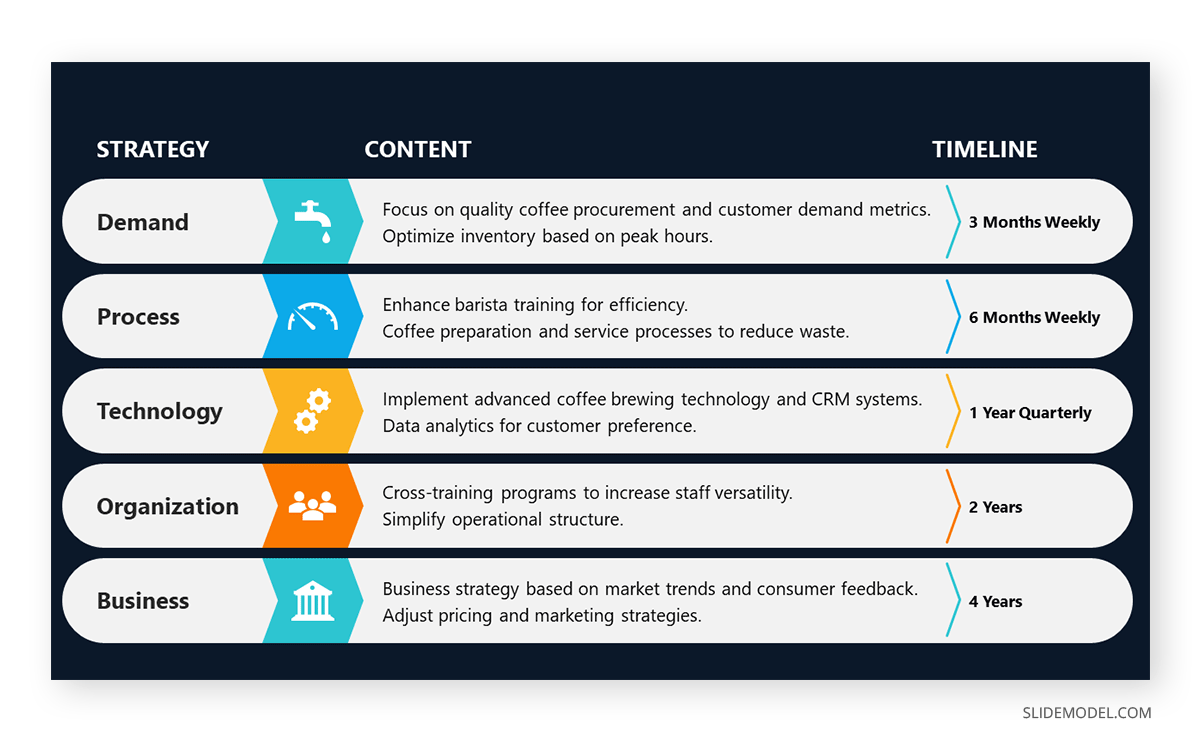
Step 3: Identify Competitive Advantage Opportunities
Here, it analyzes the information from the first two steps to uncover opportunities for gaining a competitive advantage. This could be through cost leadership (making activities more efficient to reduce costs) or differentiation (making products or services unique to enhance value).
For Café Delight, potential competitive advantages could include:
Product Innovation and Differentiation
Café Delight can make its menu more interesting by adding new coffee blends. They can even create unique blends for different times of the year. They will introduce exclusive limited-edition blends or seasonal flavors. This keeps customers excited and coming back for more.
Operational Excellence and Efficiency
While maintaining a commitment to quality, Café Delight can improve its operations to streamline processes, reduce costs, and enhance overall efficiency. It will implement technology solutions, such as inventory management software and automated brewing systems, to enhance workflow and minimize waste, which will help it save money and time.
Customer-Centric Service Excellence
Café Delight sets itself apart by providing top-notch customer experiences. This helps build customer loyalty and generates positive word-of-mouth recommendations. Prioritizing employee training programs that offer individualized and attentive service is crucial. They can significantly impact their staff by preparing to predict customer preferences, handle problems effectively, and establish meaningful connections.
Brand Storytelling and Community Engagement
Café Delight can tell customers where their coffee comes from and why it’s unique. They will engage in storytelling through social media, blog content, and in-store experiences, highlighting the journey from bean to cup and the impact of supporting local farmers. This makes customers feel good about coming to Café Delight.

Recommended PPT Templates for Value Chain Analysis Presentations
If you are short on time and need to make a quick presentation, we recommend you use a value chain analysis template. Using PowerPoint templates from SlideModel or similar platforms can significantly enhance the clarity and impact of your presentation. Choosing a template that visually aligns with the depth and complexity of your analysis is very important. At the same time, creating a presentation from scratch can be time-consuming as well. Therefore, SlideModel Templates provide a structured starting point. These templates allow you to focus on customizing content rather than designing slides from the start.
Final Words
Value chain analysis is crucial for businesses to improve efficiency, maximize value, and gain an edge over competitors. By carefully examining primary and support activities, along with costs and values, organizations can identify areas for improvement and innovation. This helps streamline operations, make products and services stand out, and focus on customer needs. Overall, value chain analysis empowers businesses to boost performance, foster innovation, and achieve sustainable growth in a competitive market.
References
[1] The Value Chain – Institute for Strategy and Competitiveness. Harvard Business School. https://www.isc.hbs.edu/strategy/business-strategy/Pages/the-value-chain.aspx
[2] What is a value chain analysis? 3 steps: HBS Online (2020) Business Insights Blog. https://online.hbs.edu/blog/post/what-is-value-chain-analysis
[3] https://ecampusontario.pressbooks.pub/globalvaluechain/chapter/1-4-learning-objective-3/
[5] https://www.aicpa-cima.com/resources/article/value-chain-analysis
[6] What Is A Value Chain Analysis? 3 Steps https://online.hbs.edu/blog/post/what-is-value-chain-analysis
